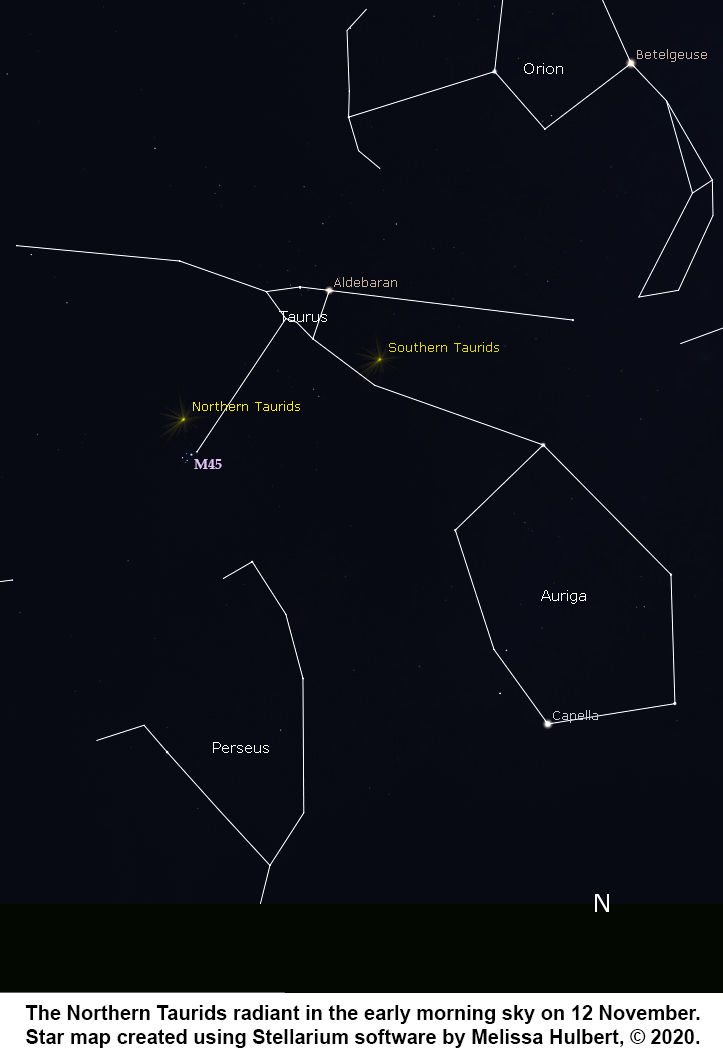What’s in the Sky - November 2020
- Mel Hulbert
- Nov 1, 2020
- 4 min read
Moon Phase:
Full Moon 1st
Last Quarter 9th
New Moon 15th
First Quarter 22nd
Full Moon 30th
Planets:
Evening Sky
Jupiter is high in the western sky after sunset in the constellation of Sagittarius.
Saturn is also high in the western sky in the constellation Sagittarius and is above Jupiter.
Mars is high in the northern sky after sunset in the constellation of Pisces.
Morning Sky
Venus is low in the eastern sky just before sunrise in the constellation Virgo. The brilliantly shining planet will then move into the constellation Libra in the last week of the month
Worth a Look:
13th: A lovely predawn meeting of the waning crescent Moon with Venus. The crescent Moon will be below and slightly to the north (left) on Venus. A good opportunity for wide-field photographers.
19th: The waxing crescent Moon joins Jupiter and Saturn in the western sky after sunset. The Moon will be to the south (left) of Jupiter and slightly above the largest planet in the Solar System. With Saturn sitting just above Jupiter, the three will make a lovely sight in the early evening sky. A great opportunity for wide-field photographers.
26th: Mars and the waxing gibbous Moon will be near each other in the northern sky. The Moon will be to the north (right) of the Red Planet.

Meteor Showers:
11th/12th: The Northern Taurids meteor shower which is linked to the periodic comet 2P/Encke. Meteor showers are caused when the Earth crosses the orbit of a comet and encounters a trial of debris/dust left by the comet and we see lots of meteors appearing to come from one area of the sky. This is called the radiant and each shower is named after the constellation or bright star near which the radiant appears. In this case it’s the constellation Taurus and the radiant is near the open star cluster M45 – the Pleiades. Meteors are best seen after midnight in dark skies, away from city lights, however the peak activity for the Taurids is best seen around midnight, where ever you are located on Earth. There are actually two radiants nearly 10° apart, both showing the same amount of activity. They are known as the Southern and Northern Taurids. The best time to observe this meteor shower from late evening to the early morning. The Northern Taurids are active from the 20th October to the 10th of December, with the peak expected on the morning of the 12th. The shower is known for its bright, slow moving (~29km/s) meteors. This year’s predictions suggests an hourly rate of 5 meteors during the peak however from time to time Jupiter’s orbit brings it close to the trail of the comet and the Jovian Giant’s gravity nudges more of the particles towards Earth. While not predicted to occur this year, keep in mind that this is a prediction and that activity can vary from year to year and if the shower does turn out to be active this year, and with no moonlight to interfere with observations as the waning crescent Moon doesn’t rise until after 3am (AEDT) both mornings, it is certainly worth a look. This shower is also a good opportunity for widefield photographers as the slow moving meteors are ideal for imaging.
18th: November sees the return of the annual Leonids meteor shower. The radiant is within the sickle or head of the constellation Leo, the lion. Certain meteors showers can be attributed to certain comets and the Leonids are associated with the periodic comet 55P/Tempel-Tuttle and is usually at its best approximately every 33 years when this comet returns. Meteors are best seen after midnight in dark skies, away from city lights, with the Leonids no exception. The shower is active from 6th November until 30th November. Maximum peak occurs on the mornings of the 17th & 18th, with predictions suggestion an hourly rate of 15 meteors. Keep in mind that this is a prediction and that activity can vary from year to year and with New Moon on the 15th, the early morning hours will be free from moonlight – perfect observing conditions! It provides a good opportunity for wide-field imagers, though with the Leonids being fairly swift moving, it will take patience and a wide angle lens with short continuous exposures to capture a meteor or two!
STOP PRESS - New Meteor Shower
A new meteor shower was detected in mid-October and mid-November in 2019, with both appearing to be associated with the same stream of particles. The radiant is in the constellation Pisces (Psc) near the star 29 Psc [1]. While the shower was not detected in mid-October this year, it will be interesting to see if it appears in November. The meteors were seen last year between 11-18 November and dark skies away from city lights will be the best place to look for this shower.
You can download a star map for November here.
Clear Skies!
References:
[1] Central Bureau for Astronomical Telegrams. (No. 4882). Retrieved October 30, 2020, from http://www.cbat.eps.harvard.edu/
Dawes G., Northfield P., Wallace K. (2019). Astronomy 2020 Australia, Quasar Publishing.
Lomb, N. (2019). 2020 Australasian sky guide. Ultimo, NSW: Museum of Applied Arts and Sciences Media.

Comments